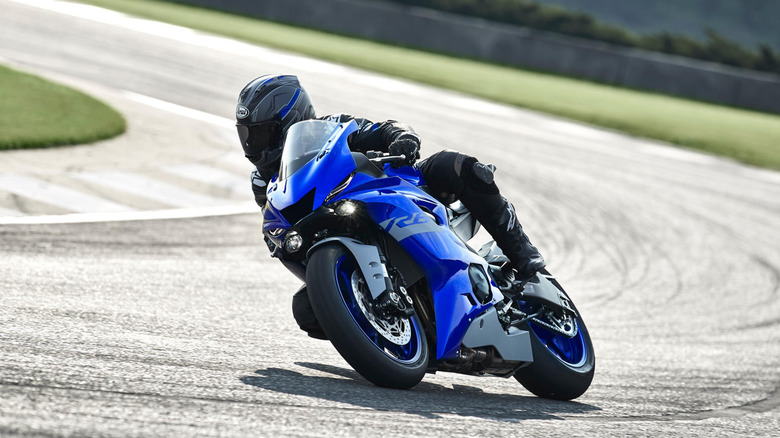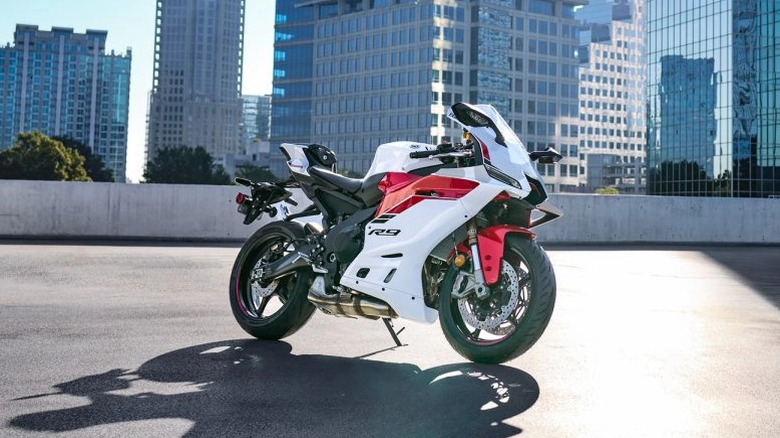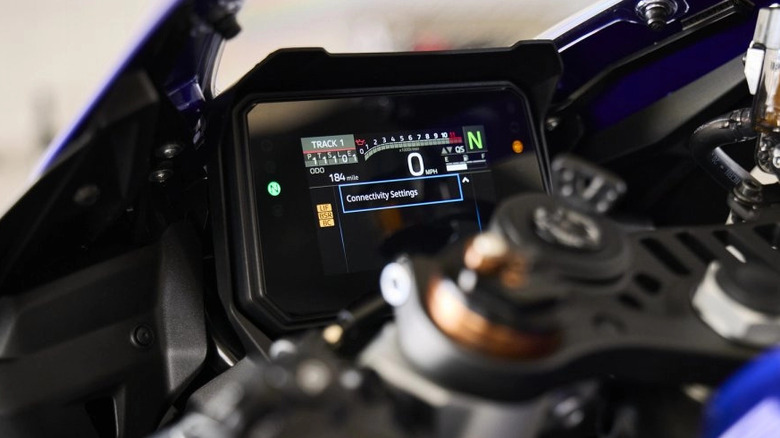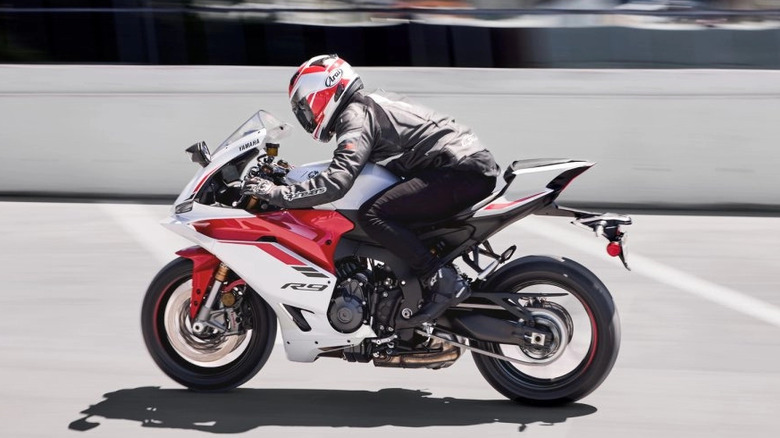Is The Yamaha R9 Better Than The R6? Here's How They Compare
Introduced in late 2024, the R9 is the newest sport bike in Yamaha's stable. It's in the middle of its lineup, positioned between the parallel-twin-powered R7 and the liter-bike speed demon known as the R1. But the spot below the R1 in the lineup used to belong to another screaming four-cylinder motorcycle: the R6.
The Yamaha R6 was lauded for generations, with a high-revving four-cylinder engine that was praised by journalists and owners alike. It was ultra-competitive and one of the best-looking bikes when it was available, locked in what seemed like an eternal battle with rivals such as the Kawasaki ZX-6R and the Honda CBR600RR. But, like many other manufacturers, Yamaha had to phase out some of its inline-4 motorcycle engines to comply with European emissions standards. That's where the R9 comes into frame.
Not a direct replacement for the R6 or its big brother, the R1, the R9 is powered by Yamaha's CP3 three-cylinder engine. The R9 doesn't rev as high as the old R6, nor is it as sonorous, but the R9 makes up for it in big ways. So is the Yamaha R9 better than the R6? A lot of purists will say the R6 is a better bike, even today, but I disagree. I've reviewed the data, leaned on my extensive experience with both three- and four-cylinder Yamaha bikes, and the winner is clear. With a better price, dead-even power output, more torque, and modern creature comforts, the R9 comes out on top.
Price and performance
The R9 is powered by Yamaha's CP3 engine. The CP3 is an 890cc inline three-cylinder that makes 117 hp and 68.6 lb-ft of torque (119 ps and 93 Nm). That's more than respectable for a motorcycle that weighs just 430 pounds. According to Yamaha, the R9's aluminum frame is the lightest ever used on one of its supersport models. That respectable level of power comes with a reasonable MSRP of $13,124 (including $625 destination fee) from Yamaha.
As mentioned, the only street-legal R6s you can get your hands on these days are used. There's a track-only version available in some countries, but that's not what most riders will go for. And even used R6s are still pretty expensive, with low-mileage examples going for $15,000 or more. If the bikes were the same price, and they both came with zero miles on the odometer, there's a strong case for the R6, but they aren't.
The R6's 599cc four-cylinder engine made 117 hp in its day, matching the R9, but it had significantly less torque than the R9 at 46 lb-ft. The R6 made its power at much higher revs, too, at around 14,500 rpm compared to the R9's 10,000 rpm peak. The R9 also generates its torque lower down in the rev range, making it much more street-friendly. For the money, the R9 is a better performance purchase for most riders and scenarios.
Power isn't everything
With their dead-even horsepower numbers, it might seem like the R9 and R6 are evenly matched. But the R6 has a slightly higher top speed (about 162 mph on the R6 compared to the R9's 150-mph-plus top speed) and delivers its power in a unique way that the R9 will never achieve. It revs to the moon and, having taken several four-cylinder R6s to redline, I can personally attest to just how fun that riding experience is. The low, grunty torque of the CP3 engine is likely to be much more useful and rewarding around town, though, and it's a more usable bike in almost every way. I prefer the torquey experience provided by something like the R9.
Another aspect where the R9 really wins out is in the tech department. Modern features like cruise control, an assist & slipper clutch, a quick shifter, and Yamaha's big 5-inch rider display all make the R9 feel thoroughly modern. Smartphone connectivity is a big plus too, making the R9 a better companion for daily commutes. Traction control, wheelie control, lean-sensitive brake control, and slide control are all part of the modern features that make the R9 a better bike for most riders. The hardware is strong, too. KWB shocks are standard in both the front and rear, with adjustable preload, compression, and damping at both ends. Brembo calipers do the stopping, while winglets up front give the R9 a proper MotoGP-inspired look.
Methodology
I compared these two bikes based on a combination of personal experience, professional reviews, and raw data. I've been riding for years and have owned both four-cylinder and three-cylinder Yamahas, including extensive experience on a CP3-powered Yamaha and several generations of the R6. Both of the bikes presented are sporty and enjoyable to ride, so I also looked into both bikes' specs and performance numbers to pick a winner. In addition, I considered new and used prices for the R9 and R6, respectively, as well as reviews from several respected outlets. Owner reviews also played a small part in the research, helping me understand how owners are experiencing and enjoying both bikes.



